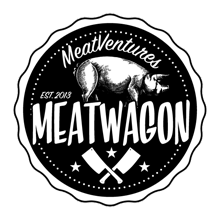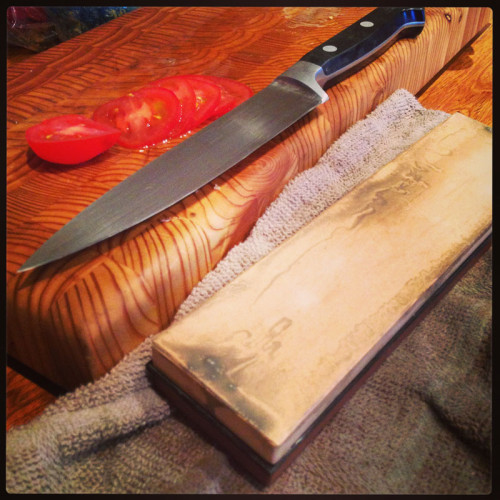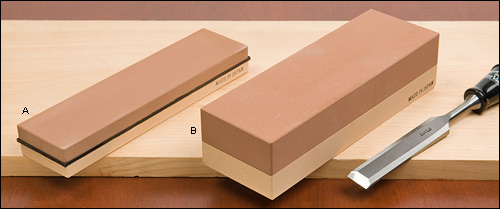An important part of cooking is always using a sharp knife. A dull knife makes cooking less enjoyable, and is a danger in the kitchen because it makes you push harder while cutting, which could result in an accidental slip. I just learned how to sharpen my own knives using a water stone so I won’t try to explain the process myself here, but I will share the resources I used to learn.
There are two main components to maintaining a sharp knife: sharpening the knife, and honing the knife. Until recently I’ve been taking my knives out to a local store to be sharpened every few months. I decided I wanted to learn how to sharpen my own knives, so I picked up a good starter water stone from Lee Valley: a 1000/4000 grit combination stone.
I did some reading and watched a bunch of videos on youtube until I felt comfortable with the sharpening process. It took some time, but using the water stone I was able to sharpen my knives until they were razor sharp. They went from really dull (it had been a while since I had them sharpened) and not being able to cut through a tomato skin, to being able to cut clean, paper-thin tomato slices, and shave a piece of paper into shreds.
Here’s a good video discussing water stones:
Here’s a good video showing the actual sharpening technique:
This slideshow at Serious Eats has a great step-by-step explanation of the process as well.
Once the knife is sharpened, it should be honed at least once a day and more often depending on how much you use it. The edge of the knife will go out of alignment as you use it, and honing it on a steel will keep the edge aligned and sharp.
Here’s a video showing the honing technique:
Now that I’ve learned how to properly sharpen my own knives, I’ll never let them get as dull as they were. Prep has become a lot easier and definitely more enjoyable. The water stone that I bought was about $40 and was a great investment. The sharpening process takes some time and is very repetitive, but it almost becomes like a form of meditation, where you’re only focused on the task of sharpening.
If you don’t already sharpen your own knives, I recommend giving it a try. Start on a cheap knife to practice the technique first before you try to sharpen an expensive one.
On a side note, I’ve got a lot of new content planned for this site, and a goal of writing at least 50 articles this year. So expect a lot more to come – recipes, reviews, and more!



hey MeatVentures, Been following you since before you announced you wanted to start a Truck business. I am just starting to make knives… and have been a sharpenaholic for decades. The 1000/4000 stone you bought is a great starter stone.. in that it fulfills most everyday needs in the kitchen. Personally, I despise the “sharpening steel” you mentioned. Instead, try a few light passes on the 1000 and see the difference between that and the Steel. email me for anything blade related, or charcuterie related. BTW, I was looking for Cow Navel that you have used, but nobody knows of it in Toronto/GTA so far.
Jordan
Hey Jordan – what is it you don’t like about using a sharpening steel to hone?
You’ll be able to find navel here – http://vgmeats.ca/ – they don’t stock it, but if you call them they’ll bring it into the store. Last time I got it I was getting a whole piece for $2 a pound. I think it was about 7-8 pounds maybe. It’s also called beef plate – the specific piece I got was 121a Beef Plate – Short Plate Boneless – check here: http://www.canadabeef.ca/ca/en/beef_export/products/plate.aspx.